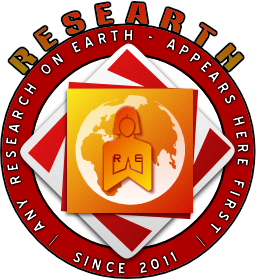Growing Human Population and Sustainable Development
DOI:
https://doi.org/10.51611/iars.irj.v8i1.2018.87Keywords:
Population Demographics, Sustainable Development, UN-SDG2030Abstract
The 2030 Agenda for Sustainable Development, adopted by all United Nations Member States in 2015, provides a shared blueprint for peace and prosperity for people and the planet, now and into the future. No Poverty, Zero hunger, Health & Wellness, Gender Equality, Clean Water, and many others have been kept on priority for development across world. But what plays a critical role in planning, execution, and success of these goals is “Resource Estimation & Planning” and that in turn is dominated by the ‘Human Population Trends’ of different regions on globe. Growing Human Population has been a challenge for all future-plans for sustainable development across globe and their success. The current paper highlights the close correlation between trends of growing human population and sustainable development
Downloads
References
PDDESA-UNS (2009), "World Population Prospects: The 2008 Revision". Population Division of the Department of Economic and Social Affairs of the United Nations Secretariat.
PDDESA-UNS (2017), "World population projected to reach 9.8 billion in 2050, and 11.2 billion in 2100". Population Division of the Department of Economic and Social Affairs of the United Nations Secretariat.
Pinto Oshma Rosette (2015), "Effect of Global Recession on Indian Realty Sector and its Future Developments", IARS'International Research Journal, Vol. 5, No. 2, 2015 (URL:https://researth.iars.info/index.php/curie/article/download/49/48)
Robert Engelman (2009), "Population & Sustainability", Scientific American Special Editions 19, 2s, pg 22-29, doi:10.1038/scientificamericanearth0609-22; URL: https://www.scientificamerican.com/article/population-and-sustainability/ Retrieved 10 August 2017
Stephen Dovers, Colin Butler (2015), “Population and environment: a global challenge”, Australian Academy of Science, URL: https://www.science.org.au/curious/earth-environment/population-environment, Retrieved 15 December 2017
Taner Güney. (2017). POPULATION GROWTH AND SUSTAINABLE DEVELOPMENT IN DEVELOPED-DEVELOPING COUNTRIES: AN IV(2SLS) APPROACH. 22. 1255-1277. URL: https://www.researchgate.net/publication/321167892 Retrieved 1 August 2017
United Nations Population Fund (2013), "Sustainable Development and Population Dynamics: Placing People at the Centre", Statement by Anne-Birgitte Albrectsen, UNFPA's Deputy Executive Director of Management, at the Open Working Group on Sustainable Development Goals; URL: https://www.unfpa.org/press/sustainable-development-and-population-dynamics-placing-people-centre Retrieved 10 August 2017
Venus Upadhayaya (2017), "Emotional Dynamics of Action and Core Involvement: A new theoretical perspective for designing development strategies in schools", IARS'International Research Journal, Vol. 7, No. 2, 2017 (URL: https://researth.iars.info/index.php/curie/article/download/79/66)
Wikipedia (2017), “Human overpopulation”, URL: https://en.wikipedia.org/wiki/Human_overpopulation, Retrieved 05 January 2018
Worldometer (2017), “World Population Statistics”, URL: https://www.worldometers.info/world-population/, Retrieved 05 October 2017
Worldometers (2017), "World Population Clock – Worldometers". Worldometers.info. Retrieved 1 August 2017.
Downloads
Published
Issue
Section
License
Copyright (c) 2018 Shubham Yadav

This work is licensed under a Creative Commons Attribution 4.0 International License.
Author(s) hold complete right on the content of this article. Copyright to the content are governed as per Copyright Policy of the Journal.





















